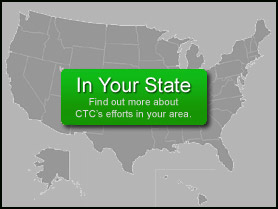Over the course of the past several years, and in particular through the debate over Fast Track trade negotiating authority, workers, environmentalists, family farmers and others have succeeded in expanding the trade debate. The discourse over reasonable trade policy now addresses a number of key issues including: labor and environmental enforcement, investment, trade remedy laws, services and others. The Bush Administration, however, is currently blazing ahead on an ambitious agenda of bilateral, regional, and multilateral trade agreements that repeat the failures of NAFTA and the WTO, and in several instances backtrack from what progress has been made in recent trade policy. In order to effectively combat this model and direct the debate over AFTA and other trade policies, we need to shape alternatives and create a tool to educate new Members about the complex issues involved in bilateral trade agreements. This is where the Fair Trade for Our Future resolution comes in!
What Does the Resolution Do?
1) Allows us to address multiple trade agreements with one tool
As various future trade agreements come before congress, the resolution can be used to test whether these agreements measure up and to hold Members to a stated standard. Even if Members refuse to co-sponsor the resolution, the process of lobbying gives us a tool to make Members explicitly say which policies they oppose, and allows us to target our education and efforts toward that area.
2) Provides a proactive statement of what we’re for
In this political climate, fair trade activists are constantly forced to lobby members to oppose various trade legislation, and are often criticized as being anti-trade. The Fair Trade for our Future resolution gives us something we can be for and something which we can encourage Members of Congress to support. It is not a “pie in the sky” resolution, but establishes a threshold for responsible trade policies that can effectively be used to move Members’ positions.
3) Provides an education and organizing tool
The Fair Trade for Our Future resolution gives us a hook to use to educate members of Congress and potential new allies. By lobbying Members to become co-sponsors of the resolution, we can force them to go on the record as supporting explicit fair trade policies.
4) Articulates concrete policy prescriptions
The Fair Trade for Our Future resolution identifies trade policy prescriptions in eleven key areas: 1) Investment, 2) Services, 3) Government Procurement, 4) Environmental, Labor and Public Interest Standards, 5) Trade Remedy Laws, 6) Food Safety, 7) Agriculture and Food Security, 8) Transparency, 9) Governmental Authority, 10) Access to Medicines and Seeds, and 11) Development, and states that all future agreements should comply with these policies. The positions in the resolution are based on policies which have garnered significant support in the trade debate.
The Fair Trade for Our Future resolution is being co-sponsored in the House by Rep. Sherrod Brown (D-OH), Rep. Henry Waxman (D-CA), Rep. George Miller (D-CA), Rep. Jack Quinn (R-NY), Rep. Hilda Solis (D-CA), Rep. Steve LaTourette (R-OH) and Rep. Collin Peterson (D-MN). The leader in the Senate is Sen. Russ Feingold (D-WI). Both resolutions are open for broad co-sponsorship and we hope to work on gathering co-sponsors into 2004.




